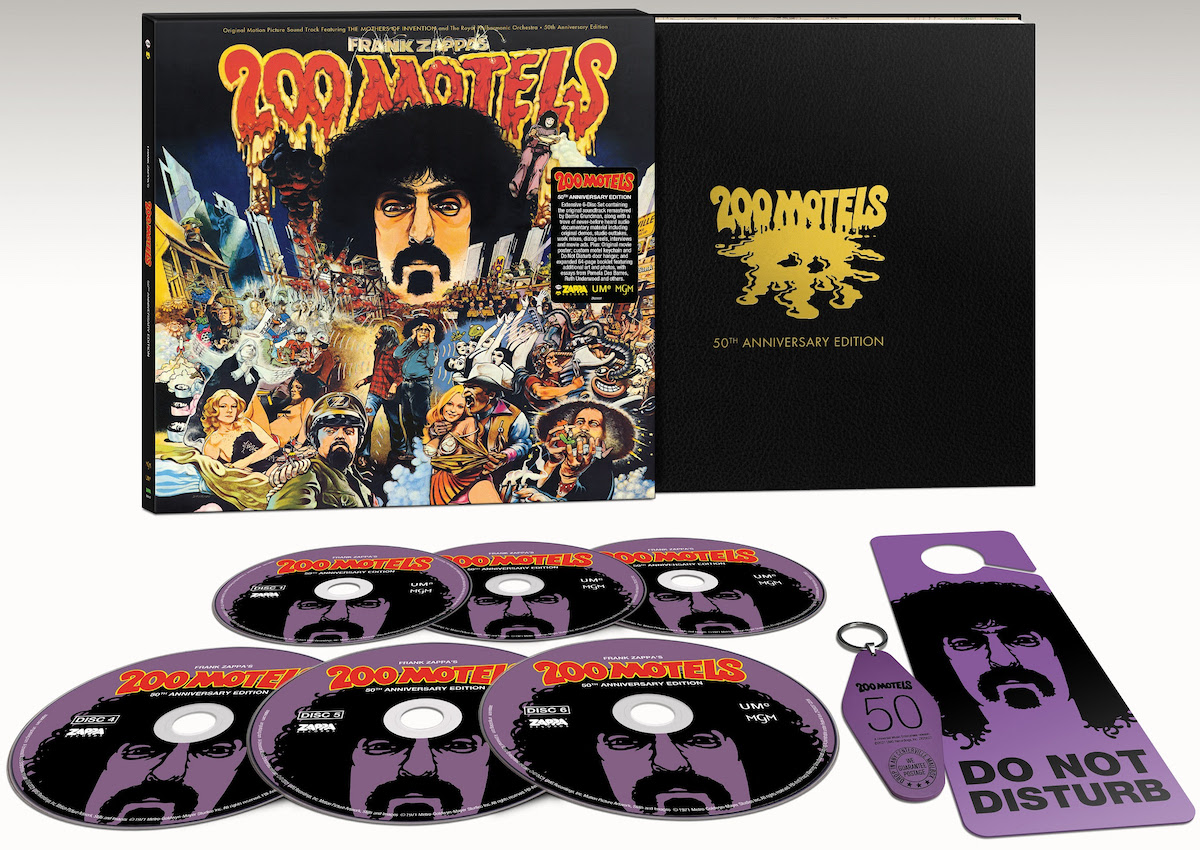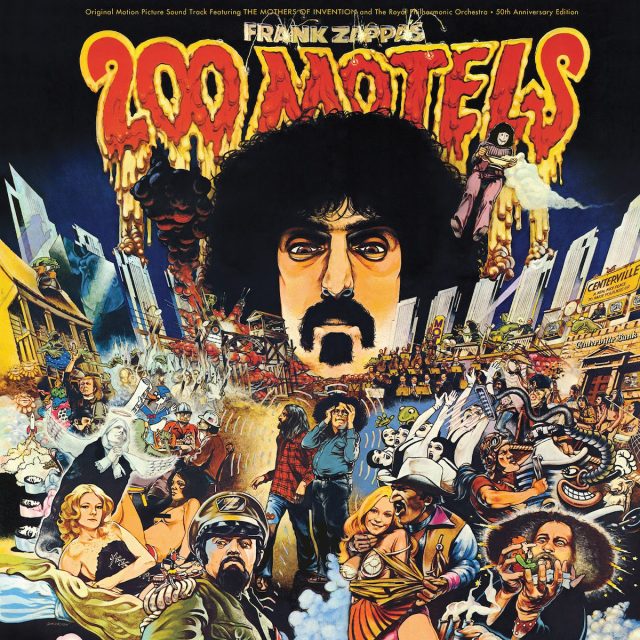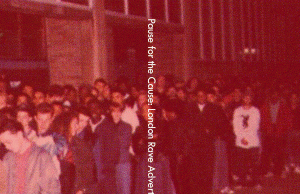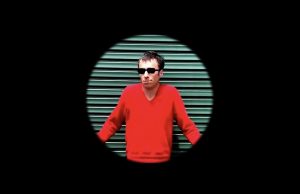THE EDITED PRESS RELEASE: “Released in October 1971, Frank Zappa’s 200 Motels was a miraculous feat, a cinematic collision of the venerated musician and composer’s kaleidoscopic musical and visual worlds that brought together Zappa and his band The Mothers, Ringo Starr as Zappa — as “a large dwarf” — Keith Moon as a perverted nun, Pamela Des Barres in her acting debut, noted thespian Theodore Bikel, the Royal Philharmonic Orchestra, and an incredible assortment of characters (both on screen and off) for a “surrealistic documentary” about the bizarre life of a touring musician.
A heady, psychedelic stew of low and highbrow art forms, the film, written by Zappa and co-directed by Tony Palmer, mixed irreverent comedic skits, madcap satire, eye-popping animation and virtuosic musical performances from both The Mothers and the RPO for a fascinating and free-wheeling multimedia extravaganza. Shot in just 10 days with a budget of around $650,000 from distributor United Artists, 200 Motels was one of the first movies to be filmed entirely on videotape and Zappa and crew pushed the envelope of the burgeoning new medium’s possibilities, mostly notably through its use of spectacular — and at the time — state-of-the-art visual effects. Described by Zappa as “at once a reportage of real events and an extrapolation of them… other elements include ‘conceptual by-products’ of the extrapolated ‘real event’ … In some ways the contents of the film are autobiographical,” 200 Motels was hailed as “a stunning achievement (with) just the right touch of insanity,” and the “zaniest piece of filmusical fantasy-comedy since The Beatles‘ A Hard Day’s Night.”
The corresponding soundtrack was equally diverse, a wild pastiche of avant-garde rock and orchestral compositions interspersed with dialog from the film. Compositions like the finale Strictly Genteel were some of the most ambitious material ever written and recorded by Zappa. The band in the film and on the soundtrack consisted of Zappa (guitar & bass), Mark Volman (vocals & special material), Howard Kaylan (vocals & special material), Ian Underwood (keyboards & winds), Aynsley Dunbar (drums), George Duke (keyboards & trombone), Martin Lickert (bass), Jimmy Carl Black (vocals), and Ruth Underwood (orchestra drum set). In true Zappa fashion, as he wrote in the liner notes, “This music is not in the same order as in the movie. Some of this music is in the movie. Some of this music is not in the movie. Some of the music that’s in the movie is not in the album. Some of the music that was written for the movie is not in the movie or the album. All of this music was written for the movie, over a period of four years. Most of it (60%) was written in motels while touring.”

In celebration of 200 Motels’ golden anniversary, the monstrous 50th Anniversary Edition brings together the original newly remastered soundtrack with a staggering amount of rare material unearthed from FZ’s vault, including original demos, studio outtakes, work mixes, interviews and movie ads, along with newly discovered dialog reels, revealing an early audio edit of the film. Also included is a wealth of never-before-heard audio documentary material.
Discs 1 and 2 feature the soundtrack with demos and outtakes; two of the many highlights include unreleased mixes and takes of the Chunga’s Revenge tunes Road Ladies and Tell Me You Love Me. Discs 3 and 4 contain the Dialog Protection Reels, which reveal an early version of the movie, while Disc 5 and 6 present unreleased outtakes, alternates and historical nuggets sequenced in the order of the original shooting script, the way Zappa originally envisioned the film before he ran into time and budget constraints. These illuminating discs reveal Zappa’s original intent for the first time.
Putting together this 50th anniversary edition was a labor-intensive process that bore fruit at nearly every turn as vaultmaster Joe Travers dug through Zappa’s expansive archives. As Travers writes, “During this search-and-seizure mission, I was able to unearth a multitude of audio treasures from a very large number of tapes. Original demos, session outtakes, alternate mixes and versions, and even dialog reels that captured an edit of the film that predates the final assembly which eventually made it to theaters everywhere in 1971.” Amongst the gems discovered include a number of ¼-inch reel-to-reel tapes made at Trident Studios during February of ’71, which contain rough mixes of nearly everything that was recorded on multi-track. As Travers explains, “they reflect raw performances, as they happened before FZ would get a hold of the multi-track masters and bring them to Whitney Studios in Glendale for over-dubs and sweetening. The Trident tapes allow us to hear music that did not make the film, or the final soundtrack album. They also helped us to reconstruct pieces of music like The Pleated Gazelle or What’s The Name Of Your Group? into their full sequences per the score. Over the years, even Frank himself forgot the sheer amount of music that actually did get recorded. All of the archiving for this 50th anniversary set has produced incredible amounts of content that we would never had known existed otherwise.”












































